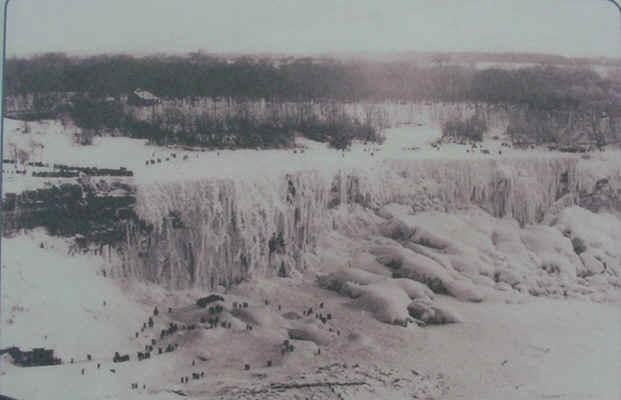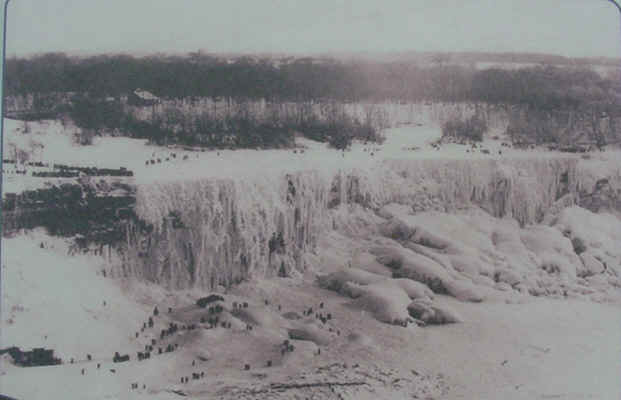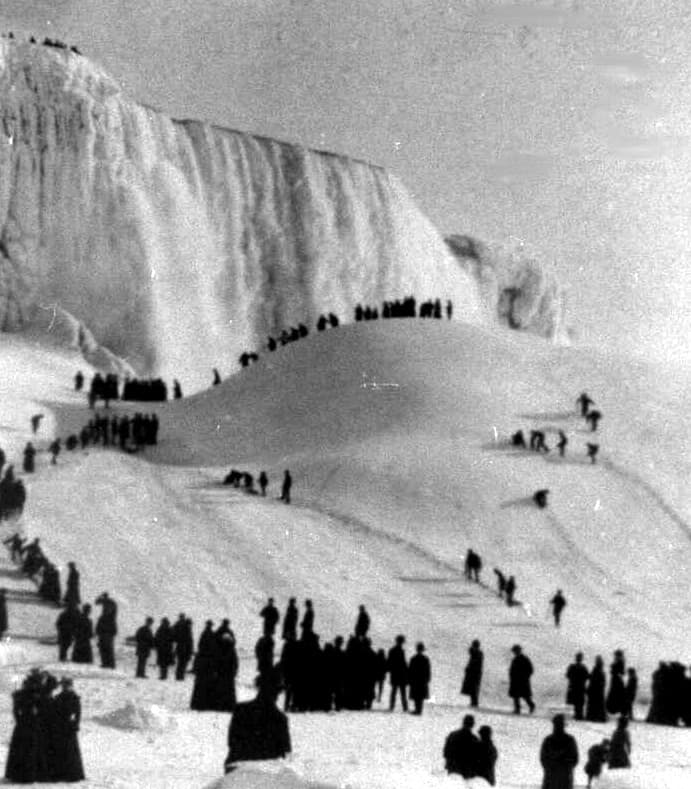Can Niagara Falls ever fully freeze over?
Published January 8, 2023 at 2:45 pm

It remains one of the most asked questions Niagara Park gets. “Can Niagara Falls freeze over?” Or “Has Niagara Falls ever frozen over?”
Quick answer: no. Basic physics won’t allow it because 85 million litres (22.5 million gallons) of water every minute flows over the falls. It is moving far too quickly and far too heavily from Lake Erie, down the Niagara River and over the falls to be able to freeze. Water has to be more or less stationary to effectively freeze.
However, does it ever appear to the naked eye that Niagara Falls has frozen over? Yes, all the time. Here’s why.
“During particularly cold temperatures, the mist and spray begin to form a crust of ice over top of the rushing water, making it appear as though the Falls have, in fact, stopped,” says Niagara Parks.
“However, the water continues to flow underneath the sheets of ice.” So all we, the viewer, see is a thick layer of ice but the water continues on into Lake Ontario.
The frozen-over look appearance is even more apparent with the American Falls than the Canada’s Horseshoe Falls because less water from the Niagara River flows over the smaller neighbour-to-the-south version.
“Have you noticed that the American Falls appear to be more ‘frozen’ than the Horseshoe Falls?” asked Niagara Parks.
“This is because the American Falls only receive about seven per cent of the Niagara River flow with the rest going over the Horseshoe Falls. With less water going over the Falls, there is greater opportunity for ice to build up, giving the appearance of ‘Frozen Falls’.”
Interestingly enough, this has been written about in countless places. One website, zmescience.com, claims that in 1911, the falls did freeze over. In a piece written by Mihai Andrei in January 2021, the headline blares: “1911: The Year Niagara Froze.”
He provided a few old-time uncredited photos that made it appear that, yes, Niagara Falls had frozen over.


The photos attached to the “1911: The Year Niagara Froze” certainly makes it appears that
Niagara Falls has, indeed, frozen over. However, he added a disclaimer a little further into
the piece acknowledging that, no, the water continues to flow under the thick ice coating.
“What happens is during a very harsh winter a crust of ice accumulates along the fall creating this amazing natural landscape,” Andrei wroted, adding, “You have to keep in mind that it doesn’t actually freeze solid, but the ice thickness went up to 50 feet (almost 17 meters).”
In 2018, Janice Thomson, former Chair of Niagara Parks Commission and current President and CEO of Niagara Falls Tourism, told a media outlet that if you listen carefully, you can hear the water flowing under the ice layer that’s visible.
“You can stand there and you hear the roar of the water, you feel the power of it and then you hear ice cracking. It’s beautiful to stand there and listen to it,” she said. “It’s just nature at its finest when you hear the cracking of the ice and you realize that the force of the water is always going to triumph.”
It’s the first lesson taught in university-level architecture classes: “Water always wins.”
INsauga's Editorial Standards and Policies









